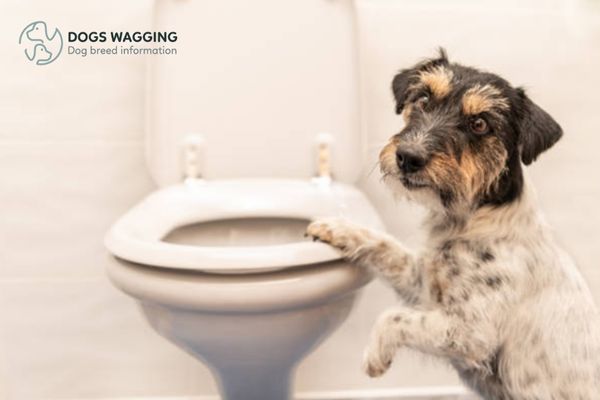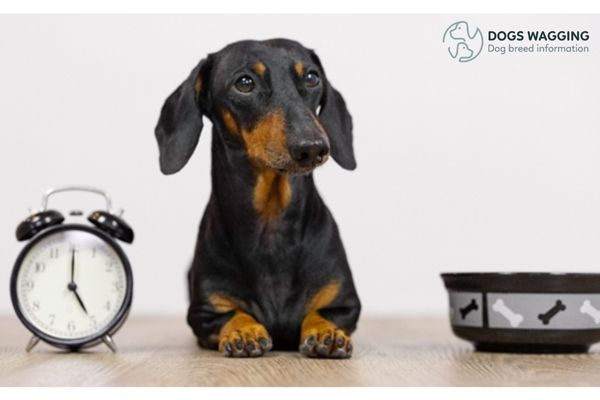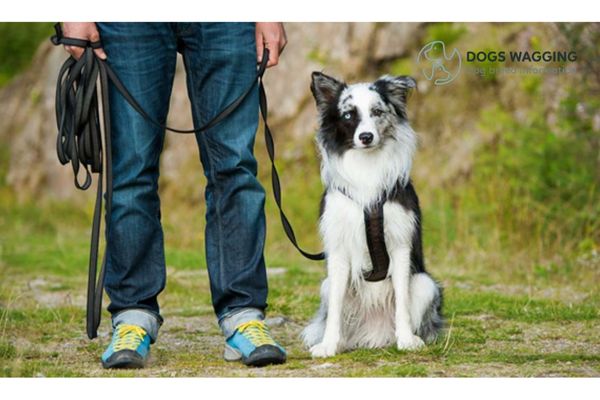John Switch • Tue Jan 02 2024
How To Potty Train A Dog: All Things You Should Know

Potty training is a fundamental aspect of bringing a new dog into your home, whether a puppy or an adult. It's about teaching your dog where and when it's appropriate to go to the bathroom, a process requiring patience, consistency, and understanding.
If you don't know How To Potty Train A Dog, this article will provide you with the knowledge and steps necessary to effectively potty train your dog, making the experience positive for both you and your furry friend.
What Is Potty Training?
Potty training, also known as housebreaking or house training, is the process of teaching your dog to eliminate outside or in a designated indoor area. The goal is to establish good habits and a communication system so that your dog understands the appropriate times and places to go.
Effective potty training involves a combination of schedule adherence, signal recognition, and positive reinforcement. It's one of the first and most crucial steps in creating a happy, healthy home environment for your pet.
Understanding Your Dog's Needs
Before diving into training, it's essential to understand your dog's specific needs. Age, breed, and previous living conditions can significantly impact how quickly and effectively a dog learns to potty train. Puppies, for instance, have small bladders and will need to go out more frequently. Older dogs or those with previous negative bathroom experiences might require a more nuanced approach.
Learning to recognize the signs that your dog needs to go—such as sniffing, circling, or whining—is also crucial in preventing accidents and establishing a routine.
Setting Up for Success
Creating a conducive environment is critical to successful potty training. Start by choosing a specific spot outside for your dog to use regularly. This helps create a habit and makes clean-up easier. Inside, ensure that your dog has a comfortable, designated space like a crate, which can also aid in training by tapping into a dog's instinct not to soil its sleeping area.
In addition, establishing a consistent feeding and watering schedule is equally important as it dictates your dog's elimination schedule.
The Potty Training Process
Here are some effective steps that you can use for the potty training process, including:
- Establish a Routine: Take your dog out first thing in the morning, after meals, after naps, and before bedtime. Consistency is king.
- Choose a Command: Use a specific word or phrase to associate with going to the bathroom, helping your dog understand what's expected.
- Celebrate Success: Whenever your dog goes potty in the correct place, immediately offer praise and treats. Positive reinforcement is crucial.
- Deal with Accidents: Accidents will happen. When they do, clean up thoroughly and avoid punishment. Instead, reinforce the correct behavior without creating fear or anxiety.
- Nighttime Training: Be prepared for nighttime bathroom breaks, especially with puppies. Gradually extend the time between breaks as they age.
Common Challenges and Solutions
Potty training isn't without its hurdles. Some dogs may take longer to train, or you might face issues like:
- Marking
- Submissive urination
- Anxiety-related accidents
Understanding these challenges and knowing how to address them - such as through more frequent breaks, anxiety reduction techniques, or even seeking professional help - is part of the process. Patience and adaptability are your best tools here.
Maintaining Progress
Once your dog starts to understand the potty training routine, it's crucial to maintain the progress. Stick to the established schedule as much as possible and continue using the command words and rewards.
Be mindful of regression or signs of distress that might indicate a need for a refresher or a visit to the vet. As your dog matures, you'll be able to adjust the routine for fewer breaks and more trust.
Advanced Tips and Tricks
As you and your dog become more comfortable with the potty training process, you might consider advanced techniques. These can include crate training, bell training (teaching your dog to ring a bell when it needs to go out), using potty pads for controlled indoor elimination, or even teaching your dog to eliminate on command. Every dog is different, so be willing to try various strategies to find what works best for your situation.
FAQ - How to Potty Train A Dog
How Long Does Potty Training for a Dog Take?
The duration of potty training varies widely among individual dogs but typically, it takes about four to six months for a puppy to be fully house-trained. However, some puppies might grasp the basics in a few weeks, while others can take up to a year.
Factors influencing the duration include the puppy's age, breed, and natural temperament, as well as the consistency, patience, and method of the trainer. Smaller breeds with smaller bladders may need more frequent outings and might take longer to train. Consistent scheduling, positive reinforcement, and understanding of your dog's unique needs can all speed up the process.
Why Does Your Dog Regress with Potty Training?
Regression in potty training can occur for several reasons, often stemming from changes or disturbances in the dog's environment or routine. Possible causes include:
- Stress or Anxiety
- Medical Issues
- Insufficient Training
- Changes in Schedule
Understanding the root cause is crucial to addressing regression. Once identified, you can adjust your training or consult with a vet or a professional trainer for more tailored guidance.
When Should Your Dog Be Potty Trained?
The ideal time to start potty training is when the puppy is between 12 and 16 weeks old. At this age, they have enough bladder and bowel control to learn to hold it and are generally more capable of understanding and following instructions. Starting earlier can be challenging, as very young puppies may not have full control over their bodily functions. However, it's never too late to start; even adult dogs can be trained with patience and consistency.
While most dogs can start to understand and follow basic potty training between 4 and 6 months of age, total reliability, especially in different situations or locations, might take up to a year.
Conclusion
Potty training is a significant milestone in any dog's life and requires time, patience, and understanding from the owner. Remember that every dog is unique, and what works for one might not work for another. Stay positive, be patient, and be consistent, and you'll establish a lasting routine that works for both you and your dog. With the right approach, potty training can be a rewarding process, laying the foundation for a happy, healthy relationship with your pet.
This article should provide a comprehensive guide on potty training a dog, from understanding the basics to implementing advanced strategies. Each section is designed to give you a clear and structured approach, ensuring you are well-equipped to undertake this vital aspect of dog ownership.

John Switch / Author
Hello this is a test author
Recent blog posts

John Switch • Sat Dec 30 2023
How To House Train A Dog: A Complete Guide
House training a dog is a fundamental step in creating a harmonious living environment for both the pet and the owner. It involves teaching your dog where a

John Switch • Wed Jan 03 2024
How To Train A Dog To Stop Barking: Top 5 Effective Training Tips
Barking is a natural dog behavior, but excessive barking can be challenging for dog owners and neighbors. Understanding the reasons behind barking and apply
 Potty Training A Dog
Potty Training A Dog Each dog has different needs
Each dog has different needs Choose proper commands
Choose proper commands Maintain potty training routine
Maintain potty training routine Why Does Your Dog Regress With Potty Training?
Why Does Your Dog Regress With Potty Training?